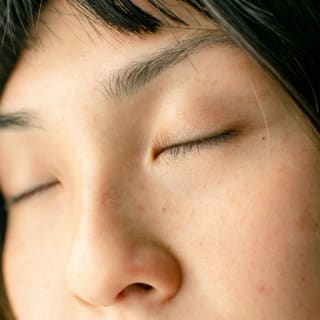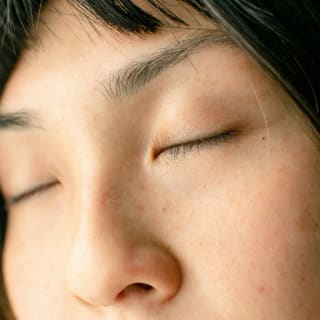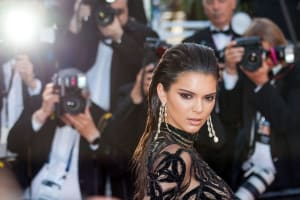
The Skinny
Average Recovery
3 weeks
Permanence
Permanent
Application
Surgical Procedure
Surgical
Yes
Cost
$2500 - $3500
The Specifics
What is an Asian blepharoplasty open incisional approach?
An Asian blepharoplasty open incisional approach is a cosmetic surgery procedure performed by a plastic surgeon to create a static, natural appearing eyelid crease in the upper eyelid. The monolid (single eyelid) commonly seen in individuals of Asian descent is strongly correlated to the epicanthal fold at the medial epicanthus, which is a prominent feature of Asian eyelids. Therefore, individuals of Asian descent with the monolid appearance typically utilize Asian blepharoplasty to achieve an upper eyelid crease.
The Anatomy of the Eye

The Asian blepharoplasty open incisional approach utilizes a surgical incision in the upper eyelid to remove excess fat, tissue, and adjust muscle tissue as needed. Asian blepharoplasty open incisional approach is considered the gold standard of Asian blepharoplasty as it allows the most access and refinement of the upper eyelid.
What cosmetic concerns does an Asian blepharoplasty open incisional approach procedure treat?
Who is the ideal candidate for an Asian blepharoplasty open incisional approach procedure?
The ideal candidate for an Asian blepharoplasty open incisional approach has thicker or excessive upper eyelid skin, or a thickened pretarsal orbicularis muscle. The Asian blepharoplasty open incisional approach procedure is not recommended for patients with significant brow ptosis, prominent or bulging eyes, or certain chronic medical conditions, such as dry eye.
What is the average recovery associated with an Asian blepharoplasty open incisional approach procedure?
The acute healing phase of an Asian blepharoplasty open incisional approach lasts about seven to ten days. Swelling, bruising, and pain of the upper eyelids and orbit typically lasts one to two weeks, and can be alleviated with cold compresses and over the counter pain medications. Nonabsorbable sutures will be removed from the upper eyelids after one week. Strenuous physical activity and sun exposure should be limited for up to six weeks. In some cases, swelling of the upper eyelids can last up to six months following an Asian blepharoplasty open incisional approach.
To better understand the healing and downtime associated with the procedure, check out our complete guide to blepharoplasty recovery.
What are the potential side effects of an Asian blepharoplasty open incisional approach procedure?
The potential side effects of an Asian blepharoplasty open incisional approach include difficulty in closing the upper eyelids to the lid margin when sleeping, blurred vision, prolonged swelling and bruising, scarring, bleeding, and changes in sensation around the upper eyelids and/or eye area.
What can someone expect from the results of an Asian blepharoplasty open incisional approach procedure?
The results of an Asian blepharoplasty open incisional approach are immediately noticeable following the eyelid surgery. This incisional technique creates permanent enhancements to the upper eyelid with the formation of a natural eyelid crease. The results will be subject to natural aging over time.
What is the average cost of an Asian blepharoplasty open incisional approach procedure?
This is a one time permanent plastic surgery procedure that can cost anywhere from $2,500 to $3,500. The actual cost of an Asian blepharoplasty open incisional approach is dependent upon location, plastic surgeon, and length and involvement of the plastic surgery. Learn more in our complete guide to blepharoplasty cost.
Pros
- More Permanent Result
- More Dramatic Result
- Less Likely To Fail
- Preferable If Excess Or Thick Skin
Cons
- Longer Procedure Time
- External Scar On The Eyelid
- More Post Op Pain
- Longer Recovery
- Irreversible
Invasiveness Score
Invasiveness is graded based on factors such as anesthesia practices, incisions, and recovery notes common to this procedure.
What to Expect
An Asian blepharoplasty with an open incisional approach creates a long lasting and natural looking skin crease in the upper eyelid. Here is a quick guide for what to expect before, during, and after an Asian blepharoplasty with an open incisional approach.
The Takeaway
An Asian Blepharoplasty Open Incisional Approach (aka a double eyelid surgery) targets the upper eyelid of individuals with a monolid (usually those of Asian descent) who are looking to create the eyelid crease seen in those with the appearance of a typical Caucasian eyelid. The incisional approach allows the plastic surgeon maximum access to the eyelid tissues of the upper eyelid for soft tissue debulking and refining. The result of an Asian Blepharoplasty Open Incisional Approach plastic surgery is a permanent, natural appearing upper eyelid crease.







